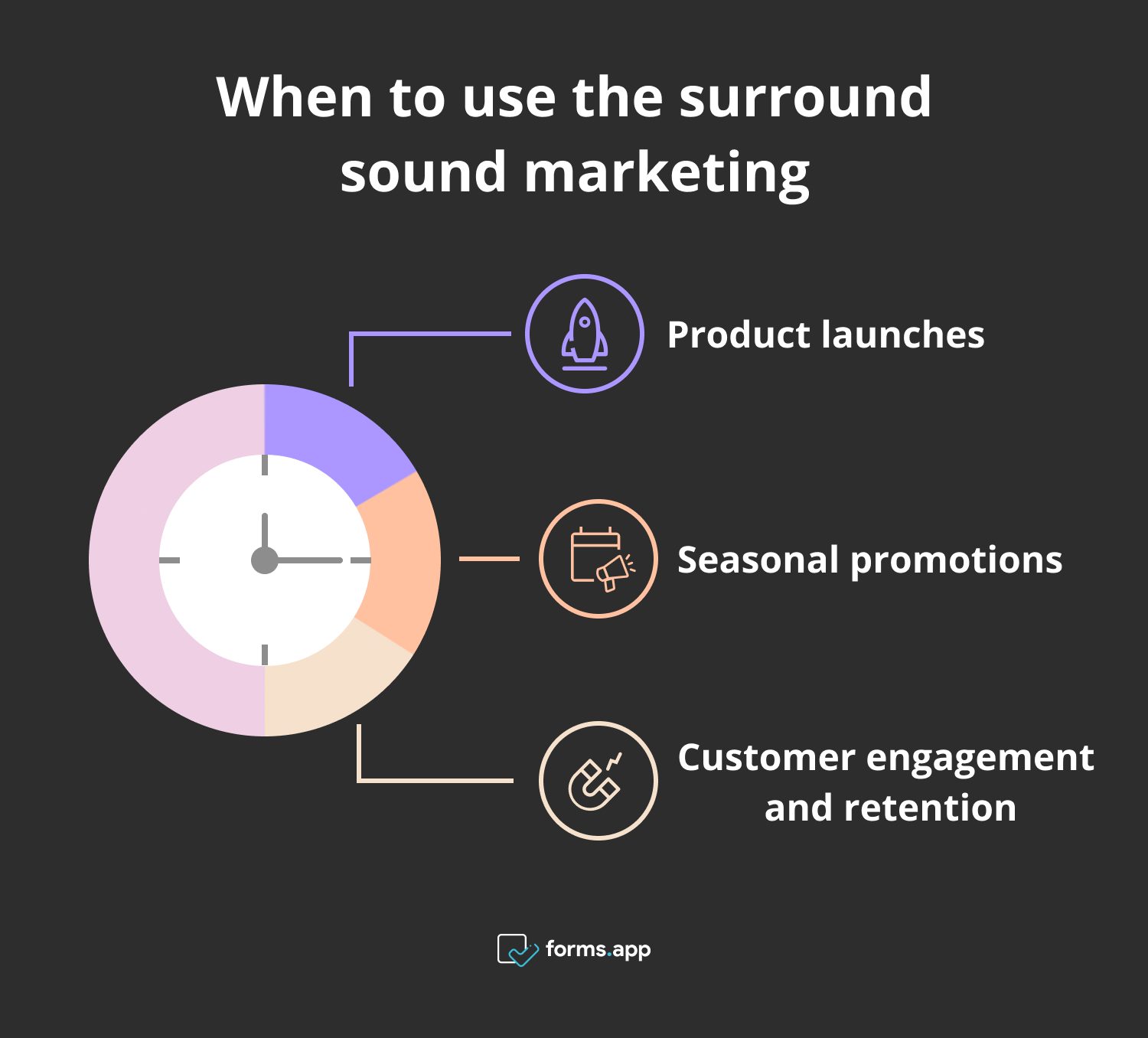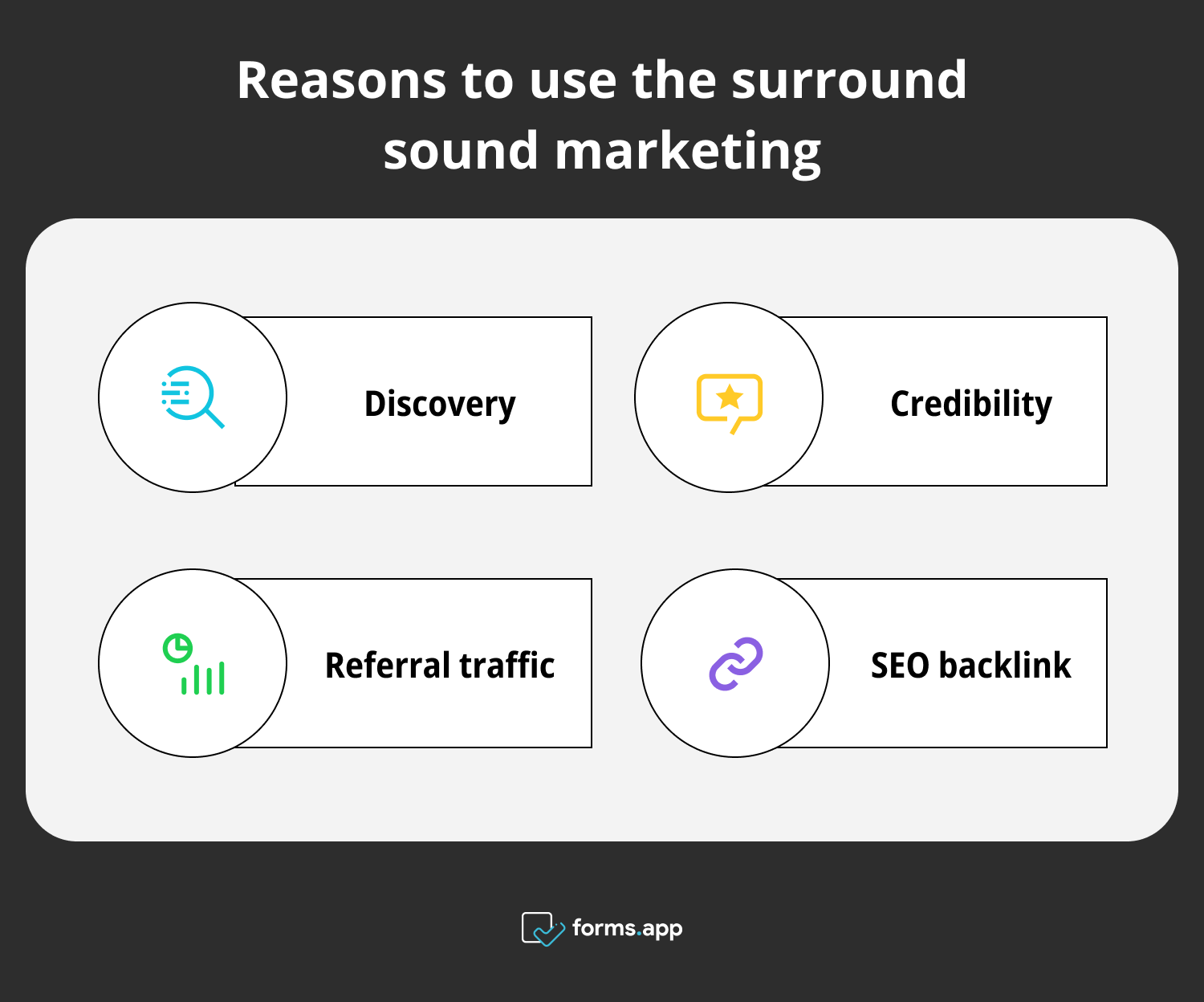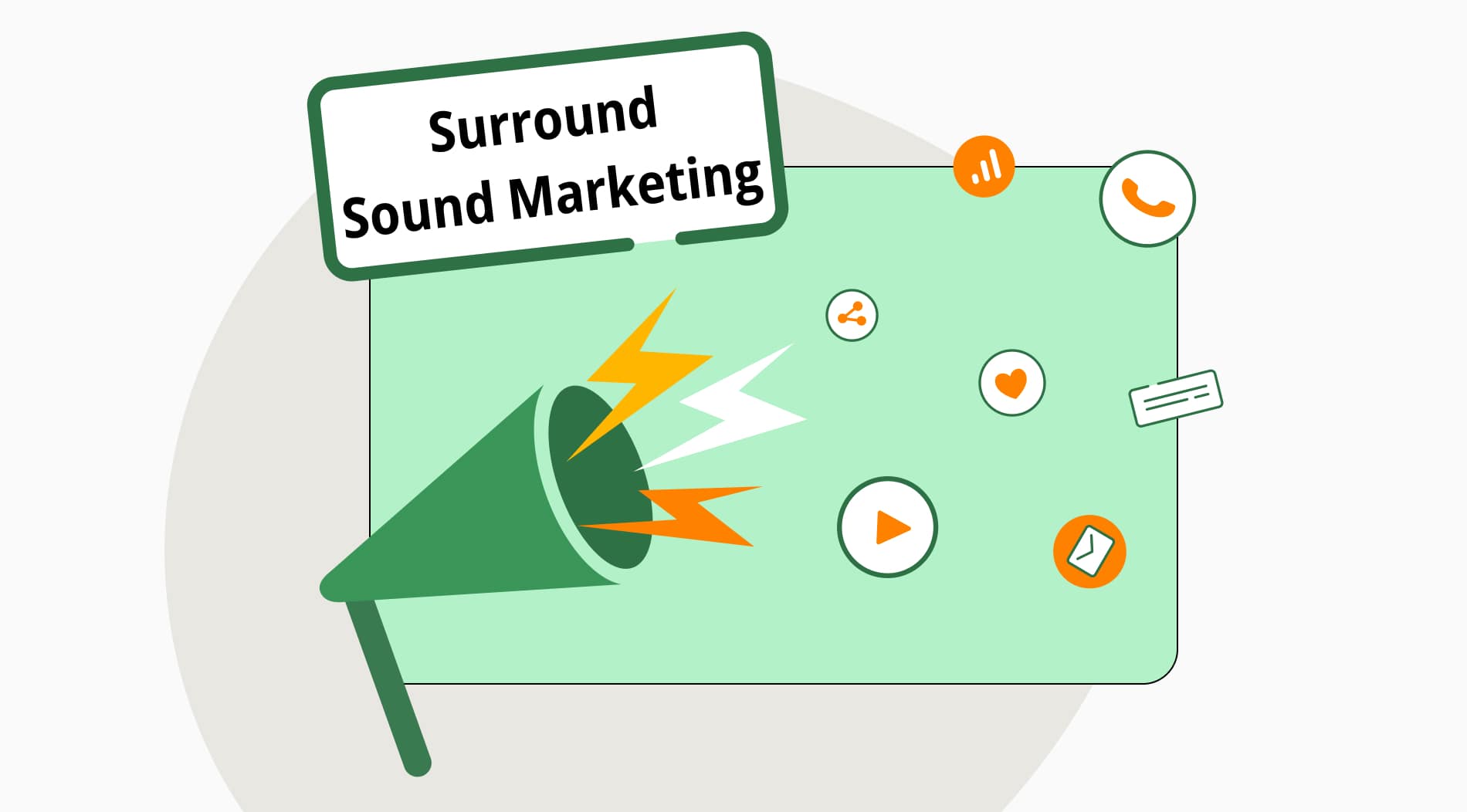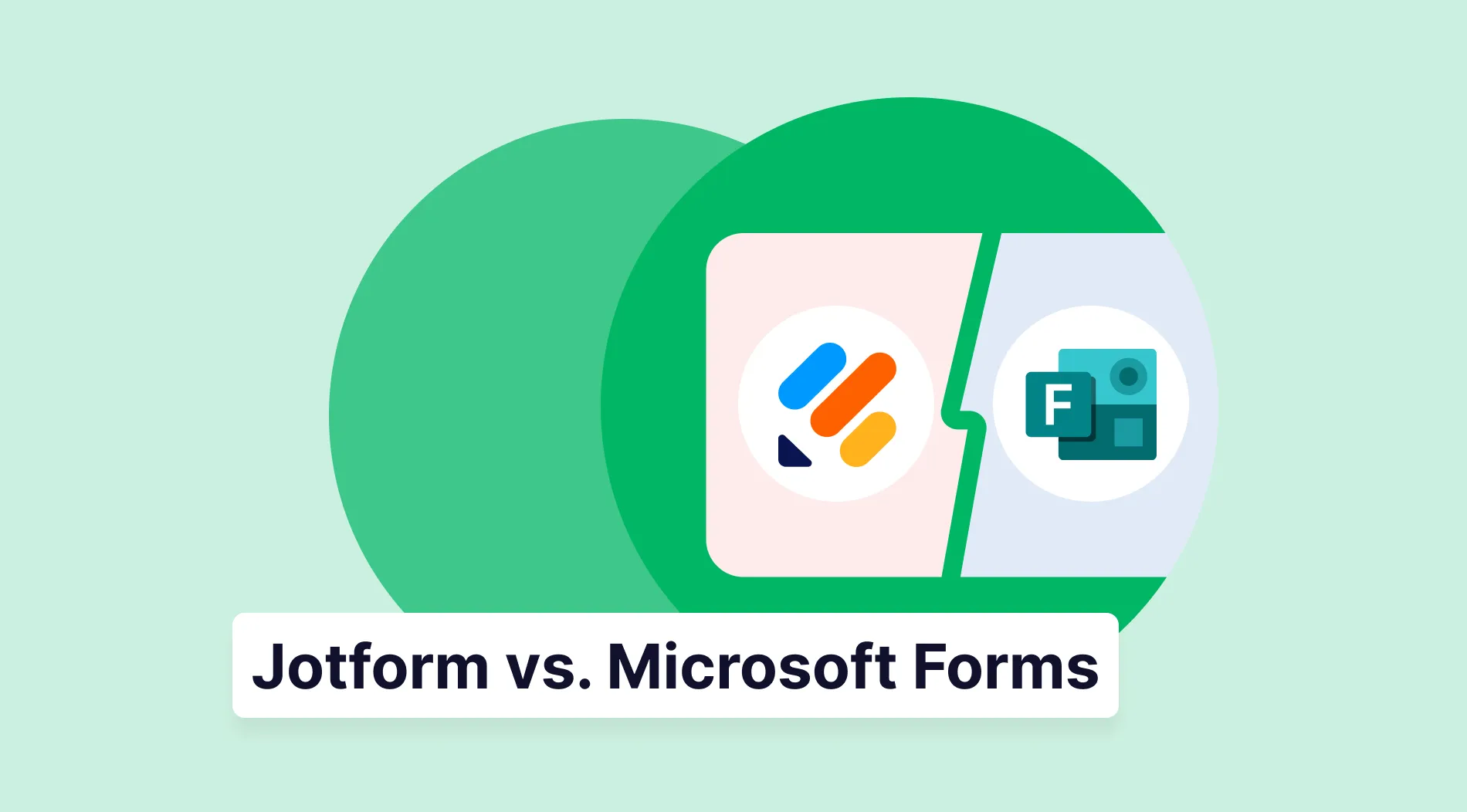Surround sound marketing, just like the sound effects coming from the audio systems in a movie theater, is about coming across your brand through a third-party search result on a social media platform, forums, product or service reviews, or listicles. Businesses use surround sound marketing strategy online to appear at the top of the search engine results.
This strategy allows you to target the right keywords for your brand which are most likely to be used when searching for the target product or service information. It is called surround sound SEO for a reason. In this article, we focus on surround sound SEO where we talk about surround sound meaning, when, why, and how to use surround sound marketing for your business.
Let’s start with the definition: What is surround sound marketing?
Surround sound marketing is an online marketing strategy that helps businesses and their offerings to be visible following the searches for a relevant keyword on a third-party digital platform by the use of SEO techniques.
Similar to the echo of the surround sound speakers of a home theater system, your product can also create an echo on the most popular websites when it is searched with the right keywords.
💡If you want to look at more marketing strategy examples, have a look at our articles on the 4Ps of marketing and the 7Ps of marketing.
How to use surround sound marketing for your business
There are 7 significant key steps to building your surround sound marketing strategy. These steps include defining your keywords for your content, identifying surrounding search results, reviewing each surrounding site, checking current referral traffic, measuring all the results, developing a sound marketing strategy, and improving your listing and results
Below, we explained these steps with supportive examples to boost your content domination:

How to use the surround sound marketing
Step 1. Define your keywords for your content
First things first, start with defining your main keywords relevant to your content. For example, if your business is providing afternoon tea in London, you might want to search for ‘The Best Afternoon Tea in London,’ which is a generic prompt many users might search for.
Then, go on Google or any other search engine manually to type your search terms to see what comes up. This will help you analyze the results for these keywords to give you a clear view of the current competition and landscape.
Step 2. Identify surrounding search results
Once you have done your research, have a look at the results for your main keywords and analyze the independent websites, competitors’ sites, and your own domain. For example, if your first search result is ‘London’s Best Afternoon Teas’ by Timeout, this would be an independent result. Whereas, ‘Fortnum & Mason Afternoon Tea’ is by a competitor.
Step 3. Review each surrounding site
Take the Timeout example above, for instance. Have a look at the independent website to see if your website is listed anywhere in the article, or any page of the website at all. If not, you can try to create a profile on this website. This elevates the chances of being in the search results or any recommended list.
Step 4. Check current referral traffic
Google Analytics is a great web analytics tool to track your current referral traffic, and identify websites and pages where your domain is listed. For instance, your incoming traffic on Timeout might not be as much as it is on Trustpilot. In this case, you might want to boost your traffic on Timeout listings to increase the appearance.
Step 5. Measure all the results
Use a manual or a digital tool to document your findings, including the websites, the ranking of your business on these sites, and the amount of traffic these listings generate. This will help you track the progress of your domain, evaluate your current position, and investigate the areas of development.
Step 6. Develop a sound marketing strategy
Based on your analysis, you can develop a strategy to increase the number of listings and mentions on relevant websites. To best achieve this, you can use both quantitative and qualitative approaches.
For example, when reaching out the review sites, forums, or blogs to request mentions is a quantitative method; updating and providing valuable content on an existing listing, and responding to customer reviews or comments are qualitative methods.
Step 7. Improve your listing and results
Reach out to blogs, forums, and other relevant websites to get featured in their articles as part of your marketing campaign. Implement your strategy to increase listings, and navigate and update the existing ones. Also, keep a track of your rankings and referral traffic, and adjust your approach accordingly if needed.
When to use surround sound marketing
Surrounding sound marketing experience gives you the opportunity to be available everywhere customers search on digital platforms. Just like meme marketing, you can use surround sound marketing strategy when you want to advertise your product not only on your brand’s platforms, but also on third-party channels which can increase the chances to be found more quickly, and engage with more customers effectively.
We have gathered some popular situations where surround sound marketing tactics can be effective. These situations include product launches, seasonal promotions, and customer engagement and retention. Let’s have a look:

Right times to use the surround sound marketing
1. Product launches
You can use a surround sound marketing strategy to promote your new product and generate excitement by leveraging multiple channels such as email marketing, generic advertising, social media platforms, and influencer partnerships, which is nowadays popularly preferred especially on Instagram. This is very likely to reach thousands of viewers through stories, reels, posts, and comments.
💡When email newsletters create anticipation and a reminder of the product, collaborating with influencers can increase customers with their genuine feedback and reactions.
2. Seasonal promotions
Special times are no exception. Businesses can use surround sound marketing during holiday times and special events to promote special offers and discounts across variety of digital channels to reach out numerous of audiences and increase sales. By tailoring the messages, you can address to all kinds of audience online whilst still maintaining your brand voice.
💡Promotional offers and discounts during the holiday season resonate with the target audience and increase brand awareness and revenue.
3. Customer engagement and retention
Surround sound marketing plays a crucial role in keeping touch with the existing customers and maintaining ongoing communication. This includes personalised communication, multi-channel engagement, and feedback and support. Businesses can use these points to deliver more personalised experience for their customers across multiple digital channels.
💡By using customer data and insights, you can deliver more specifically created messages personalized around the customers’ purchasing history, preferences, and behavior.
Why do you need surround sound marketing?
There are a number of reasons why surround sound marketing is essential for your business. One of the reasons is that it enables you to identify the search results and build your own SEO to grow in business. This immense opportunity builds ample space for brands to use it as a strategy, aka. surround sound marketing in order to expose themselves. In other words, be present everywhere you can.
If, for instance, you search for a brand on Google and find only one source dedicated to it with limited information, would you choose this over another one that appears on multiple other websites and reviews? The answer is - you would not. This is the reason why discovery, credibility, referral traffic, and SEO backlinks are the essential key points of surround sound marketing strategy to take into account.
Below, we clarified the importance and benefits of these points:

Advantages of the surround sound marketing
1. Discovery
It is important that your brand, product, or offering is discoverable in many search results on multiple surrounding platforms. If you are going to buy a new coffee maker, for example, it is very likely that you are not going to choose the first product that comes up as a result. The same thing also applies to your product. People need to see the availability and popularity of the product to take action.
2. Credibility
Customers popularly tend to go on review sites to read about an item they wish to purchase. Some of these include Yelp, Trustpilot, Timeout, and Amazon, to list a few. They are known to give honest and usually unbiased opinions on a product or a service that customers can benefit from before making a purchase. This helps people to be convinced to buy the product and boosts trust.
3. Referral traffic
This is a very common way of exploring other sites, such as jumping from one website to another through links. When a customer clicks on a website for a product, there is a high chance that they will encounter many other links embedded in the texts or articles that can take them to your brand’s platform.
4. SEO backlink
Websites with a high ranking score that appear on the top of the search results can backlink your domain signal to Google’s algorithm. Backlinks help search engines like Google discover your content and help you earn lots of traffic from them, especially if they come from authoritative and trustworthy sources.
To give a clear view of how it works in practice, here is an example where you can witness each of these points in the steps of purchasing a new vacuum cleaner:
1. The first thing you might choose to do is to ask a friend or a family member you trust who owns one as the first source. (credibility)
2. Then, you do your own research and Google ‘the best vacuum cleaner.’ (discovery)
3. To compare the products, you read reviews on different vacuum cleaners and have a rough idea of which may be the best option. (credibility)
4. Next, you search for the manufacturer (brand) to read some information about them. (referral traffic, SEO backlinking, discovery)
5. To thoroughly understand a product, you should search for the brand on Amazon and read customer feedback.
6. Once you are convinced with the information you have collected, you make a purchase.
💡 For more information about how to grow your business, have a look at our article on SaaS statistics.
Key points to take away
In this article, we had a look at the surround sound marketing examples, what makes it an important strategy, when and how to use it to elevate your brand. The importance of this strategy is to be visible on as many platforms as possible when someone searches for a specific keyword, even on the pages that are not on your domain.
Surround sound marketing increases the chances of being exposed to both existing and potential customers, especially when making a decision to purchase a product or a service. By prioritizing the relevant SEO for your brand and using our guidance as a helpful tool, you can elevate your business through a surround sound marketing strategy.
forms.app, your free form builder
- Unlimited views
- Unlimited questions
- Unlimited notifications




